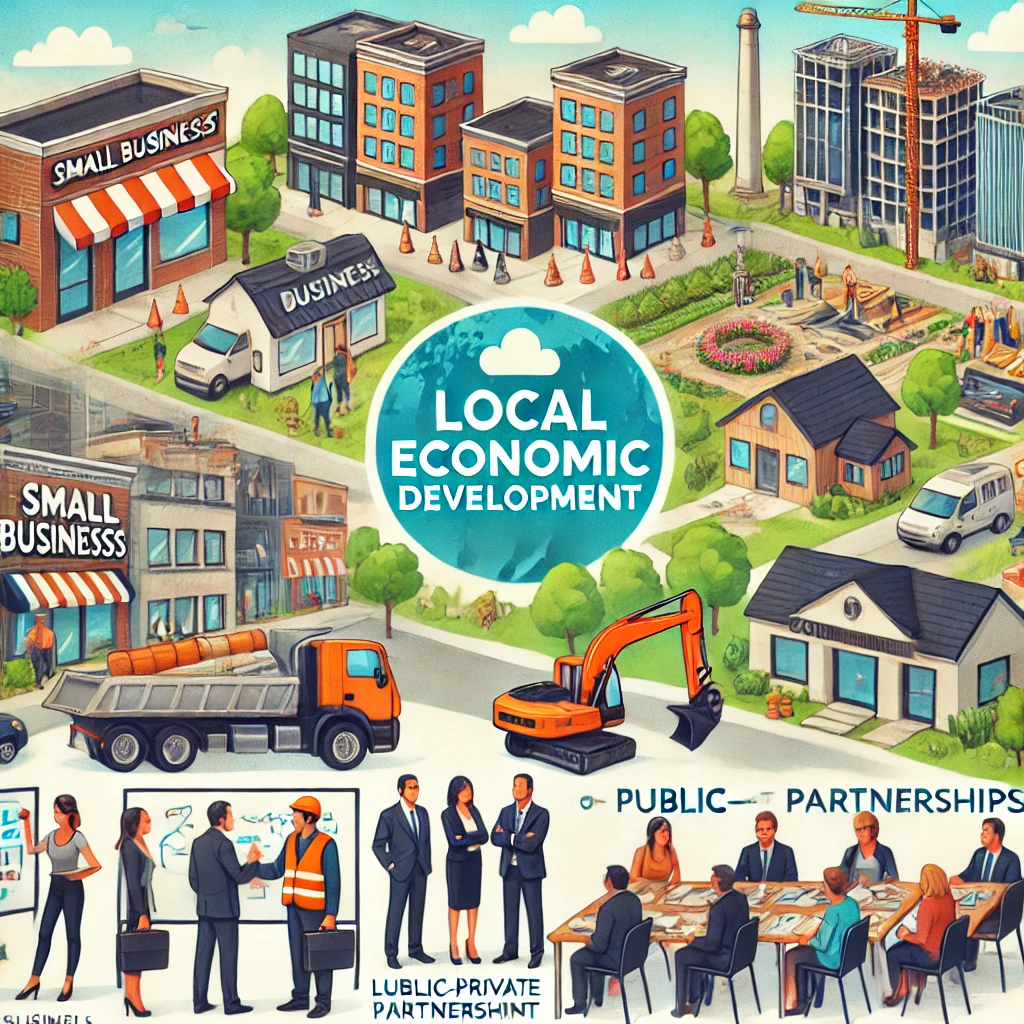Local economic development (LED) is a process by which public, business, and non-governmental sector partners work collectively to create better conditions for economic growth and employment generation. This guide will provide you with the essential strategies and tools necessary to foster sustainable economic growth in your community.
Understanding Local Economic Development
LED is about creating a vibrant, resilient local economy that can withstand external shocks and provide prosperity for all residents. Key components of LED include:
- Strategic Planning: Developing a clear vision and strategic plan for economic development.
- Business Support: Providing assistance to local businesses to help them grow and thrive.
- Infrastructure Development: Investing in physical and social infrastructure to support economic activities.
- Workforce Development: Enhancing the skills of the local workforce to meet the needs of employers.
- Community Engagement: Involving community members in the economic development process to ensure their needs and aspirations are met.
Key Strategies for Effective LED
- Conduct a Local Economic Analysis: Understand the strengths, weaknesses, opportunities, and threats (SWOT) of your local economy. This analysis will inform your strategic planning and help you identify key areas for intervention.
- Create a Business-Friendly Environment: Simplify regulatory processes, provide incentives, and support entrepreneurship. A supportive environment can attract new businesses and help existing ones expand.
- Invest in Infrastructure: Develop robust physical infrastructure (roads, utilities, broadband) and social infrastructure (education, healthcare, public services). Quality infrastructure is crucial for attracting and retaining businesses.
- Focus on Workforce Development: Implement training programs, partnerships with educational institutions, and initiatives to match skills with job opportunities. A skilled workforce is essential for economic growth.
- Foster Public-Private Partnerships: Collaboration between the public sector, private sector, and community organizations can leverage resources and expertise for more effective economic development.
- Promote Innovation and Technology: Encourage the adoption of new technologies and innovative practices in local businesses. This can enhance productivity and competitiveness.
- Market Your Community: Develop a strong brand and marketing strategy to attract investors, tourists, and new residents. Highlight your community’s unique strengths and opportunities.
Tools and Resources
- Economic Development Agencies: These organizations can provide support, funding, and resources for your LED initiatives.
- Grants and Incentives: Look for government and private sector grants, tax incentives, and other financial support for economic development projects.
- Training Programs: Invest in training and development programs for local businesses and workforce.
- Data and Research: Use data and research to make informed decisions and measure the impact of your economic development efforts.
Effective local economic development requires a strategic, collaborative approach. By understanding your local economy, creating a supportive environment for businesses, investing in infrastructure and workforce development, and fostering partnerships, you can create a thriving local economy that benefits all residents.
